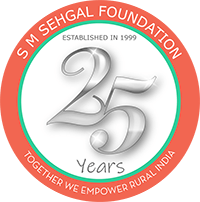When harvesting the paddy crop, farmers have typically cut off the valuable upper part, leaving crop residue in the field. The remaining part of the paddy, which has its root in the earth, is called stubble. In order to quickly prepare their fields for their wheat crop, many farmers burn the leftover plant debris after harvesting rice—a practice known as paddy stubble burning.

Harming soil health and the environment, stubble burning remains a significant issue in several states of India, necessitating a multifaceted strategy that emphasizes the economic benefits of avoiding the practice. Proper management of crop residue enhances soil health, improves input efficiency, and increases crop productivity over time. Conserving soil and water while maintaining or improving crop productivity is crucial for ensuring food security. Demonstrating and sharing effective methods for crop residue management and highlighting its role in boosting soil organic matter. is vital for soil health and crop productivity.

S M Sehgal Foundation, in collaboration with Walmart Foundation, is implementing a project in 100 selected villages of the Kaithal and Kurukshetra districts (sixty villages from Kaithal and forty from Kurukshetra) to control crop residue burning and promote agricultural development. The foundation team is raising awareness among villagers about the importance of stopping crop residue burning and is training them in better agriculture practices.
As part of this initiative, the foundation distributed twenty eight super seeder machines to selected beneficiaries in Kaithal and Kurukshetra—seventeen to recipients in the Kaithal district, and eleven in the Kurukshetra district. The super seeder machine is an effective alternative to stubble burning. The machine simultaneously sows seeds while removing straw, distributing it evenly across the field. This process helps mulch the field, retain moisture, and promote seed germination. As the straw decomposes naturally over time, the soil is enriched.
Distribution events were organized in each district. At both events, the guests informed participants about crop residue management, advising farmers to incorporate their stubble back into the fields to enhance soil fertility. They also shared information about government initiatives and financial assistance available.
The event in Kaithal was attended by Sri Jagdish Malik, assistant agriculture engineer; Shri A.K. Tyagi, scientist, Air Pollution Control Board, Delhi; and Shri Shailesh Pant, program lead, Agriculture Development, S M Sehgal Foundation, and eighty community members. The Kurukshetra event was joined by Shri Sonu Bhatt, IAS deputy commissioner, Kurukshetra; Dr. Karam Chand, deputy director, Agriculture and Farmer’s Welfare; and Dr. Rajesh Verma, assistant agriculture engineer, Kurukshetra, and seventy community members.
(By Neeraj Kumar Dubey, assistant program lead, S M Sehgal Foundation)


